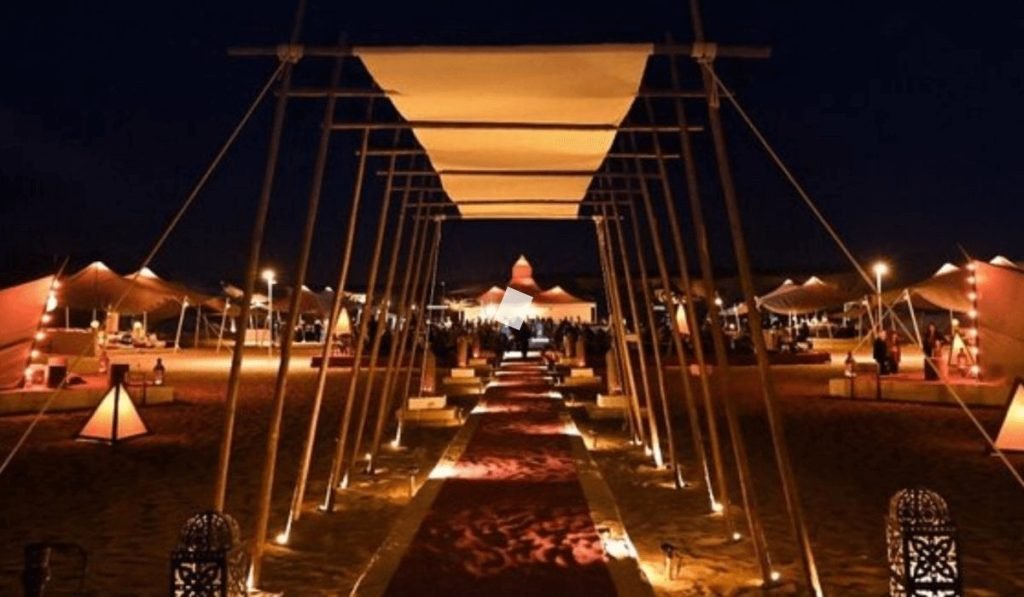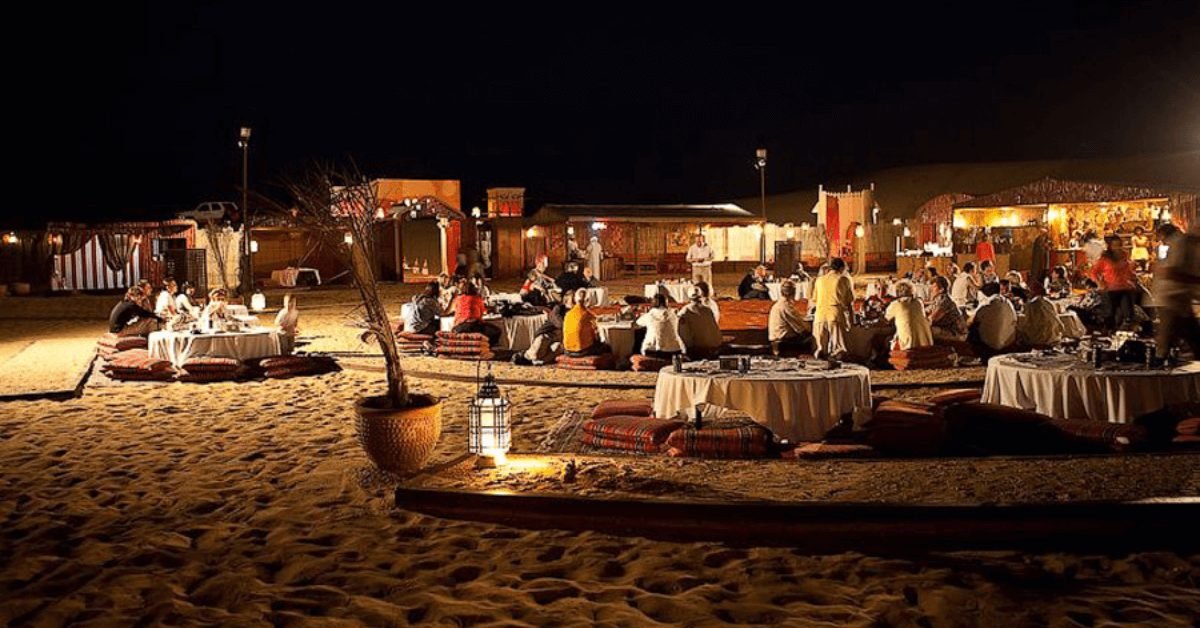Dubai’s mesmerizing desert safaris offer an enchanting experience, with awe-inspiring landscapes and unforgettable adventures. Amidst the allure of the Arabian Desert, one peculiar phenomenon often perplexes visitors: the sudden drop in temperature, turning the desert chilly at night. In this article, we will delve into the intricate workings of the desert climate, unravel the mystery behind the day-night temperature swings, explore the factors contributing to chilly nights, and understand the cultural and ecological significance of this captivating natural occurrence.
Understanding the Arabian Desert Climate
The Arabian Desert’s climate is a product of various factors, including its geographical location, global air circulation patterns, and vast expanses of sand. This section will provide an overview of the Arabian Desert climate, highlighting its unique characteristics and extreme temperature fluctuations. Visitors to Dubai’s desert safaris are met with scorching heat during the day and a surprising drop in temperature as night falls.
Temperature Extremes: Unraveling the Mystery
The Arabian Desert experiences extreme temperature variations, with scorching hot days and surprisingly chilly nights. This stark contrast raises the question of what causes these temperature swings. In this section, we will examine the diurnal temperature variations and the factors that contribute to this fascinating phenomenon. The intense solar radiation during the day plays a crucial role in heating the desert, while radiational cooling at night leads to the rapid loss of heat.
Factors Contributing to Chilly Nights

To understand why the desert turns chilly at night, we must explore the various factors at play. This section will delve into the desert’s surface properties and its ability to retain heat. The composition of desert soil also influences temperature fluctuations, as different types of sand have varying insulation effects. Additionally, the moisture levels present in the desert and their impact on heat transfer mechanisms will be discussed.
The Influence of Atmospheric Conditions
Atmospheric conditions significantly contribute to the temperature swings experienced in the desert. Dry air, clear skies, and wind patterns all play a crucial role. The aridity of the desert air allows for efficient heat dissipation, particularly during the night when radiative cooling occurs. The absence of clouds in the clear desert sky enhances this cooling effect. Wind patterns aid in dispersing heat, creating a more pleasant and chilly environment at night.
Human Intervention: Safari Camps and Temperature Control
Safari camps in the Arabian Desert offer a comfortable and immersive experience for visitors. These camps showcase ingenious architectural techniques that help regulate the temperature within the desert setting. This section will explore the innovative approaches employed, such as the strategic placement of tents to minimize heat absorption and maximize airflow. Traditional heating methods, including fire pits and traditional practices, are also used to create a cozy ambiance amidst the chilly desert nights.
The Magic of the Arabian Nights: Desert Biodiversity
The Arabian Desert is not only a place of extreme temperatures but also a haven for unique biodiversity. This section will highlight the fascinating world of nocturnal desert wildlife and their ability to adapt to the challenging desert climate. Visitors to the desert safari can experience firsthand the captivating sight of wildlife thriving during the chilly nights. We will explore the survival strategies of flora and fauna, showcasing their remarkable adaptations.
The Cultural Significance of Chilly Desert Nights
Chilly desert nights hold great cultural significance in the region. This section will shed light on the traditions and social gatherings that take place under the starlit desert sky. Nighttime is an opportunity for communities and visitors to come together, sharing stories, music, and food. Historical and mythological perspectives surrounding the desert nights will be explored, connecting the allure of the Arabian Nights to the mesmerizing desert climate.
Embracing the Cold: Nighttime Desert Activities
While chilly nights may seem daunting, they also offer unique opportunities for adventure and tranquility. This section will highlight the various activities that can be enjoyed during nighttime desert safaris. Stargazing in the dark skies of the Arabian Desert is a captivating experience, where visitors can marvel at the vast expanse of stars and constellations. Evening wildlife spotting adventures allow for encounters with elusive nocturnal creatures. Additionally, experiencing the tranquility of the desert nightscape and immersing oneself in the serene ambiance are other ways to embrace the cold.
Safety Precautions and Essential Tips for Desert Safaris
Embarking on a desert safari requires adequate preparation and knowledge to ensure a safe and enjoyable experience during chilly desert nights. This section will provide essential tips and safety precautions for visitors. It will cover topics such as appropriate clothing for cold temperatures, staying hydrated in dry and cool conditions, and navigating the desert terrain at night. Following these tips will enhance the overall experience and ensure the well-being of safari-goers.
Common Misconceptions about Desert Temperature Swings
Misconceptions often surround the desert’s temperature swings, and this section aims to dispel them. We will address common myths, such as the belief that deserts are always hot, and explain how temperature variations can differ across various deserts. By understanding the unique nature of the Arabian Desert and its specific climate patterns, visitors can truly appreciate the distinctive characteristics of the region.
Conclusion
The mystery of why the desert turns chilly at night during safaris in Dubai has been unraveled. By understanding the interplay of solar radiation, radiational cooling, atmospheric conditions, and surface properties, we can grasp the fascinating temperature swings experienced in the Arabian Desert. As visitors immerse themselves in this awe-inspiring phenomenon, they can also explore the cultural significance, embrace nighttime adventures, and witness the remarkable adaptation of desert life. The Arabian Desert holds captivating secrets within its chilly nights, offering a truly unforgettable experience.
FAQs
Is it safe to go on a desert safari at night?
Yes, desert safaris at night are generally safe. Tour operators ensure the safety of visitors by providing experienced guides and taking necessary precautions.
How cold does the desert get during nighttime in Dubai?
The desert temperature at night in Dubai can drop significantly, with temperatures ranging from around 10°C to 20°C (50°F to 68°F), depending on the season.
Are there any dangerous animals in the desert at night?
While the desert is home to various wildlife, encounters with dangerous animals are rare. Most desert animals, including scorpions and snakes, tend to avoid human contact.
What should I wear for a desert safari at night?
It is advisable to wear layered clothing to adjust to the changing temperatures. Opt for breathable fabrics and bring a light jacket or sweater for the cooler nighttime temperatures.
Can I see stars and constellations clearly in the desert at night?
Yes, the desert’s clear skies offer excellent visibility for stargazing. Visitors can marvel at the brilliance of stars and constellations, away from the city lights.

